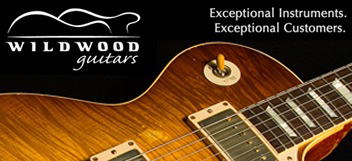Hi!
Been searching the forums, and there are excellent posts regarding fact that vintage necks were sawn "all over the place", ie a burst, goldtop or jr could be either flatsawn, quartersawn or somewhere in between (riftsawn).
It has formerly also been discussed that quartersawn necks is probably more resistant to flexion (that's why historic necks are made this way nowadays) whereas a flatsawn guitar would be more resistant to blows from sides.
My question is have anybody noticed this difference in grain pattern to affect tone??
Out of the about 20 vintage guitars I've put my hands on the last couple of years (mostly juniors and specials though) my favorite guitars have all had flat- or next to flatsawn necks. They've generally speaking sounded more "organic" or woody if you like. :wow
Just a coincidence? What say the experts?
Been searching the forums, and there are excellent posts regarding fact that vintage necks were sawn "all over the place", ie a burst, goldtop or jr could be either flatsawn, quartersawn or somewhere in between (riftsawn).
It has formerly also been discussed that quartersawn necks is probably more resistant to flexion (that's why historic necks are made this way nowadays) whereas a flatsawn guitar would be more resistant to blows from sides.
My question is have anybody noticed this difference in grain pattern to affect tone??
Out of the about 20 vintage guitars I've put my hands on the last couple of years (mostly juniors and specials though) my favorite guitars have all had flat- or next to flatsawn necks. They've generally speaking sounded more "organic" or woody if you like. :wow
Just a coincidence? What say the experts?




